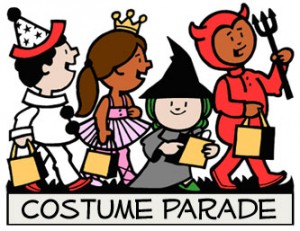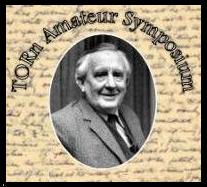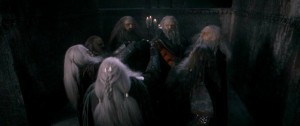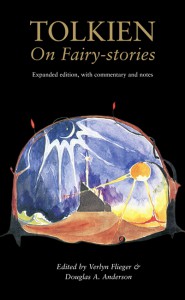This may just be the coolest Tolkien-related map you’ll see today. This week, even. The ultimate source is maps from the History of Middle-earth in Volume XI: The War of the Jewels (which is, incidentally, based on those in Volume V: The Lost Road and other Writings).
Awesome work.
Click the image to view an embiggened version.
Continue reading “An awesome colour-rendering of the realms of Beleriand from The Silmarillion”
If you have a Tolkien/Middle-earth inspired poem you’d like to share, then send it to poetry@theonering.net. One poem per person may be submitted each month. Please make sure to proofread your work before sending it in. TheOneRing.net is not responsible for poems posting with spelling or grammatical errors.
Posted in:
Share:

 There is a lot of very important info. Please take note of the following:
There is a lot of very important info. Please take note of the following:
-To join the TORn Cosplay group, simply email me at Garfeimao@TheOneRing.net to RSVP for everyone in your group, and then follow the below instructions on when and where to meet up. You can also stop by our booth #519/521 to sign up on Thursday.
-The parade is on July 4th at 8:30 am.
-Fantasycon goers get free parking at Gateway Center
– We will start staging at 7:30 am. Please arrive as close to 7:30 am as possible. I will be dressed as Bilbo after the spider fight (think cobwebs), so find me to check with me, and then I will check in for the whole group.
– If you are a walking group, you MUST be in the staging area by 8:10 am. *If you are not in the staging area by the allotted time, you will NOT be able to participate in the parade!
– You will only be allowed to drive up/down 50 North until 8:00 am.
– The staging will take place in the North-West corner of the parking lot on the corner of 50 North and 500 West.
- Check-in will be at the staging area. Please send ONE person to check-in as soon as every member of your group has arrived in the staging area. Again, find me in this staging area (look for other denizens of Middle-earth) and then I will check in for the group at 8am sharp. Our group number is 27 and there will be roller skaters behind us.
– Every member who participates in the parade will be receiving one (1) free one-day pass for Friday, July 4th. You will receive them at the parade check-in.
**When marching, please keep 2 – 3 car lengths between your group and the group in front of you. Please also be aware that we have many varying groups that will be on roller blades, bicycles, motorcycles, cars, trucks, buses, etc. that many need additional space to do tricks or performances.
Please see the FantasyCon parade webpage for a map of the location.
If you are confused, or need any help the day of the parade, find someone in a FantasyCon volunteer t-shirt. They will be more than happy to provide any needed assistance.
The parade line-up is as follows:
Police Car
Royd Tolkien
Bagpipes & Drummers
1 – Volunteers w/ Banner & Dragons
2 – FantasyCon Performers
3 – LARPERS
4 – Utah Film Commissioner
5 – Fear Factory
6 – Umbrella Corp.
7 – Mandalorians
8 – Jabba da Hutt
9 – Rouge Base Rebel Legion
10 – Ghostbuster
12 – Castle of Chaos
13 – Midvale Main Street Theatre
14 – NUAD
15 – VIP Limo & Voodoo Productions
16 – Fairy Cosplayers
17 – Loop & Hook
18 – Rose Court Guild
19 – Winter Faire
20 – Atomic Hype
21 – Rocky Mountain Muggles
22 – DrumBus
23 – MASK Costume
24 – Out of Shadows Theater Group & Salty Horror Film Fest/Convention/Productions
26 – Nihon Matsuri
27 – LOTR Cosplay Group
28 – Red Rockettes Roller Derby
29 – United Furry Fandom
30 – Steampunk Cosplay Group
31 – Nightmare on 13th
33 – ****Cosplay Chaos Group All solo cosplayers or small groups
****All solo or small group cosplayers, that are not listed above, will be in the “Cosplay Chaos Group”, which will be ending the parade.*** *
Posted in:
Share:

 Welcome to our collection of TORn’s hottest topics for the past week. If you’ve fallen behind on what’s happening on the Discussion Boards, here’s a great way to catch the highlights. Or if you’re new to TORn and what to enjoy some great conversations, just follow the links to some of our most popular discussions. Watch this space as every weekend we will spotlight the most popular buzz on TORn’s Discussion Boards. Everyone is welcome, so come on in and join the fun!
Welcome to our collection of TORn’s hottest topics for the past week. If you’ve fallen behind on what’s happening on the Discussion Boards, here’s a great way to catch the highlights. Or if you’re new to TORn and what to enjoy some great conversations, just follow the links to some of our most popular discussions. Watch this space as every weekend we will spotlight the most popular buzz on TORn’s Discussion Boards. Everyone is welcome, so come on in and join the fun!
Continue reading “TORn Message Boards Weekly Roundup — June 22, 2014”
Posted in:
Share:

 The folks of the TORn message board Reading Room, the section of our forums devoted to discussion of Tolkien’s literary works, have just put out for a call for papers for the fourth TORn Amateur Symposium (also known as TAS4).
The folks of the TORn message board Reading Room, the section of our forums devoted to discussion of Tolkien’s literary works, have just put out for a call for papers for the fourth TORn Amateur Symposium (also known as TAS4).
Previous TORn Amateur Symposiums have published essays on topics as varied as The Physics of The Hobbit, The Corrupting Nature of The One Ring, Concepts of Healing in Middle-earth, The Matter of Glorfindel, and Music and Race in Howard Shore’s Score.
For this TAS, the team of Brethil, Elaen32 and DanielLB are looking for papers that all touch upon The Lord of the Rings in some way.
TAS is an opportunity for those who love Middle-earth to share their ideas on Tolkien-related subjects in a longer written form. Continue reading “Call for papers: the fourth TORn Amateur Symposium”
Posted in:
Share:

 In his newest piece, TORn friend and regular Tolkien blogger Michael Martinez considers the intriguing proposition of how Sauron might have distributed the seven rings of power to the dwarf lords (in their halls of stone).
In his newest piece, TORn friend and regular Tolkien blogger Michael Martinez considers the intriguing proposition of how Sauron might have distributed the seven rings of power to the dwarf lords (in their halls of stone).
It’s also a great little primer if you’re not aware of, or had forgotten, your history of the seven great families of dwarves — the Broadbeams and Firebeards of Ered Luin, the Longbeards of Moria and the Ironfists, Stiffbeards, Blacklocks and Stonefoots that dwelt in the eastern reaches of Middle-earth.
Continue reading “How did Sauron give the Seven Rings to the Dwarven kings?”
If you have a Tolkien/Middle-earth inspired poem you’d like to share, then send it to poetry@theonering.net. One poem per person may be submitted each month. Please make sure to proofread your work before sending it in. TheOneRing.net is not responsible for poems posting with spelling or grammatical errors.
Posted in:
Share:

 In our latest Library piece, TORn feature writer Tedoras discusses 10 key excerpts from J.R.R. Tolkien’s famous lecture On Fairy Stories.
In our latest Library piece, TORn feature writer Tedoras discusses 10 key excerpts from J.R.R. Tolkien’s famous lecture On Fairy Stories.
In case you’ve never read it, On Fairy Stories (which Tolkien first delivered as a lecture in 1939) examines the fairy-story as a literary form, and explains Tolkien’s philosophy of what fantasy is, and how it ought to work. As Verlyn Flieger and Douglas A. Anderson write in their introduction to the expanded 2008 reprint, On Fairy Stories is “[Tolkien’s] most explicit analysis of his own art”.
The virtues of fairy-stories
By Tedoras
Professor Tolkien—as he was known then—was a very busy man in 1938. Not only was he beginning to develop what would become The Lord of the Rings, but he also delivered at this time one of his most famous lectures, titled “On Fairy-stories.” Continue reading “Tolkien and the virtues of fairy-stories”
If you have a Tolkien/Middle-earth inspired poem you’d like to share, then send it to poetry@theonering.net. One poem per person may be submitted each month. Please make sure to proofread your work before sending it in. TheOneRing.net is not responsible for poems posting with spelling or grammatical errors.
Posted in:
Share:







 In his newest piece, TORn friend and regular Tolkien blogger Michael Martinez considers the intriguing proposition of how Sauron might have distributed the seven rings of power to the dwarf lords (in their halls of stone).
In his newest piece, TORn friend and regular Tolkien blogger Michael Martinez considers the intriguing proposition of how Sauron might have distributed the seven rings of power to the dwarf lords (in their halls of stone).  In our latest Library piece, TORn feature writer Tedoras discusses 10 key excerpts from J.R.R. Tolkien’s famous lecture On Fairy Stories.
In our latest Library piece, TORn feature writer Tedoras discusses 10 key excerpts from J.R.R. Tolkien’s famous lecture On Fairy Stories.